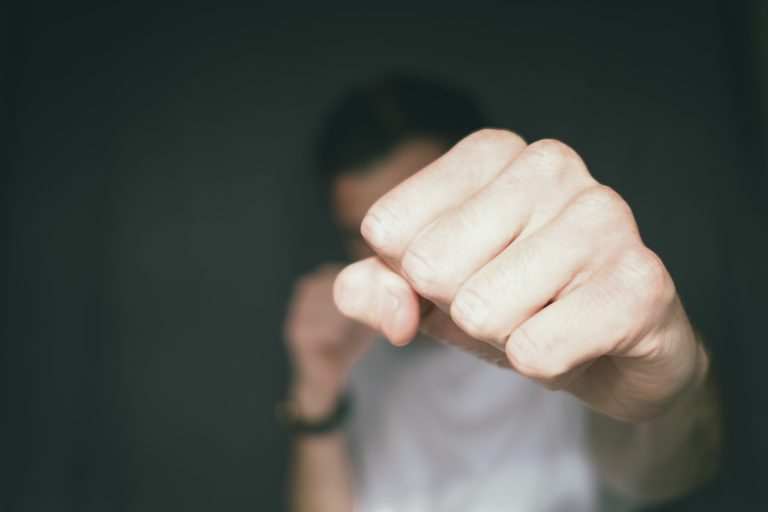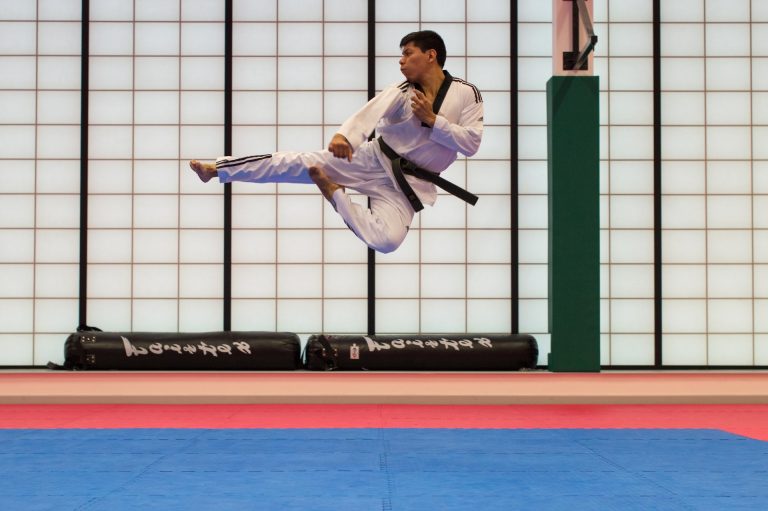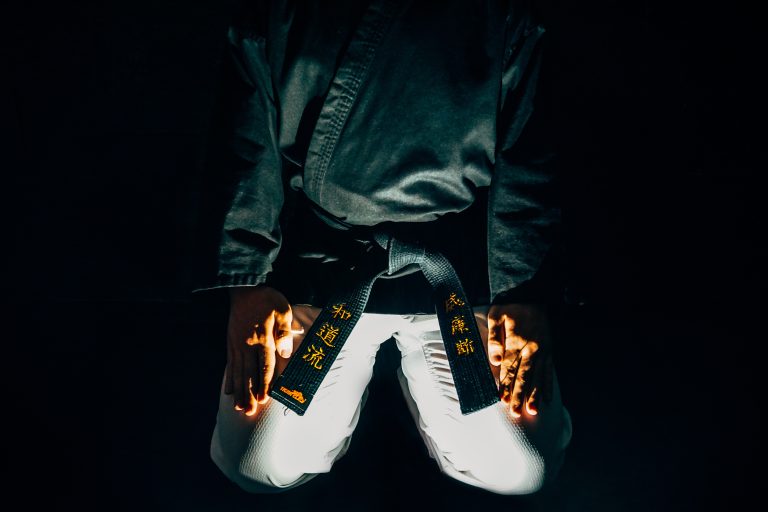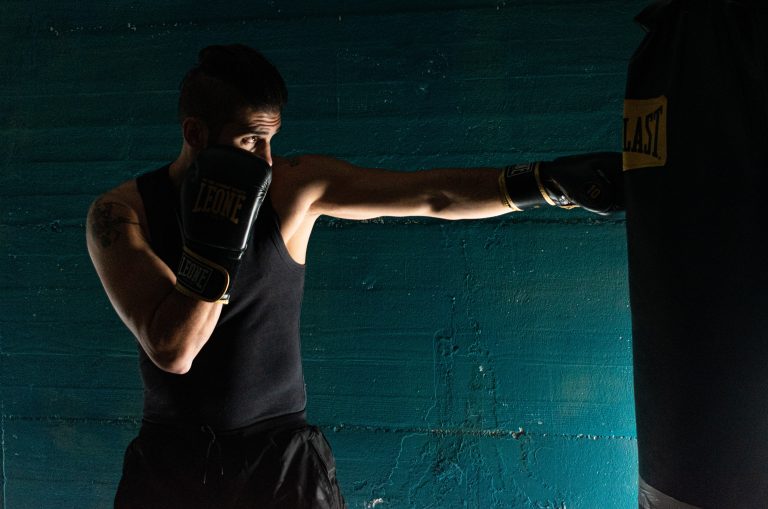Karate Kata-Namen auf Englisch: Grundlagen des Karate
Wenn man Karate trainiert, lernt man nicht nur Techniken wie Schläge, Tritte und Blöcke, sondern auch eine Reihe von Kata oder Formen. Jede Kata ist eine festgelegte Abfolge von Bewegungen, die den Schüler durch verschiedene Angriffs- und Verteidigungsszenarien führen. Jede Kata hat auch einen eigenen Namen, der oft auf Japanisch ist. In diesem Artikel werfen wir einen Blick auf die Namen einiger Karate-Kata auf Englisch.
Heian Shodan
Heian Shodan ist eine beliebte Kata und ist in vielen Karate-Stilen vertreten. Es ist oft eine der ersten Kata, die Schüler lernen. Der Name dieser Kata könnte als “Frieden und Ruhe Nr. 1” übersetzt werden. Es besteht aus 21 Bewegungen.
Heian Nidan
Heian Nidan ist eine weitere Kata, die oft in Karate-Stilen zu finden ist. Der Name könnte als “Frieden und Ruhe Nr. 2” übersetzt werden. Es besteht aus 26 Bewegungen.
Heian Sandan
Heian Sandan ist die dritte Kata in der Serie der Heian-Kata und enthält 20 Bewegungen. Der Name könnte als “Frieden und Ruhe Nr. 3” übersetzt werden.
Shotokan Kata
Shotokan ist einer der bekanntesten Karate-Stile, und seine Kata sind oft in verschiedenen Karate-Disziplinen zu finden. Hier sind die Namen einiger Shotokan-Kata auf Englisch:
- Empi – Fliegende-Schwalbe
- Jion – Liebe und Zuneigung
- Bassai Dai – Harte Feste Burg, Größere Version
- Kanku Dai – Zu den Himmel schauen, Große Version
- Hangetsu – Halbmond
Goju-Ryu Kata
Goju-Ryu ist ein Karate-Stil, der von Chojun Miyagi entwickelt wurde, und seine Kata enthalten sowohl harte als auch weiche Techniken. Hier sind einige Goju-Ryu-Kata-Namen auf Englisch:
- Sanchin – Drei Schlachten
- Seiunchin – Sturm im stillen Wald
- Shisochin – Vierzig vier Schritte
Abschlussgedanken
Egal, welchen Karate-Stil man trainiert, die Kata sind ein wichtiger Bestandteil des Lernens. Indem man die Namen der Kata auf Englisch lernt, kann man ein besseres Verständnis für die Bedeutung hinter jeder Kata haben. Wie immer ist es wichtig, sich Zeit zu nehmen, um Kata in eigenen Tempo und in der korrekten Form zu üben.
Karate Kata-Namen auf Englisch: Grundlagen des Karate
Karate kata is a series of moves performed in a choreographed sequence, simulating defense against multiple opponents. Kata is an essential element of karate training and is used to improve performance, develop muscle memory, and enhance focus, coordination, and balance. Karate is a martial art that originated in Okinawa, Japan, and has roots dating back to the 17th century. It is a discipline that focuses on self-defense techniques using strikes, kicks, and blocks.
There are various karate styles, and each style has its unique set of katas. However, the names of the katas are usually in Japanese, making it challenging for non-Japanese speakers to learn the techniques. That’s why in this blog, we will cover frequently asked questions about karate kata names in English.
What is kata?
Kata is a set of pre-arranged movements that depict various self-defense scenarios. The movements are designed to be used against one or more imaginary attackers. Each kata has a specific theme, and the moves are strategically executed to combat the imaginary attack. Kata is meant to be practiced repeatedly until the movements become instinctive.
Why are the names of katas in Japanese?
The traditional Japanese style of karate that originated in Okinawa, Japan, uses Japanese terminology for its katas. Many modern styles of karate have adopted Japanese terminology to maintain continuity with the old traditions. Also, the Japanese language was adopted to keep the training uniform globally.
What are the benefits of learning karate kata?
Apart from learning self-defense, learning karate kata has several benefits. Some of the benefits include:
- Improved focus: Learning the moves and performing them accurately requires a lot of concentration and focus.
- Enhanced balance and coordination: The series of movements in each kata require a lot of body coordination and balance.
- Boosts self-confidence: Practicing katas repeatedly boosts self-confidence as one becomes proficient in executing the moves.
- Develops muscle memory: Performing the katas repeatedly helps develop muscle memory required for quick reflexes and reaction time.
What are the English translations of the most popular karate katas?
There are numerous karate katas, and each style has its unique set of katas. Listed below are some of the most popular katas and their English translations:
| Kata Name (Japanese) | Kata Name (English Translation) | Karate Style |
|---|---|---|
| Heian Shodan | Peaceful Mind 1 | Shotokan |
| Heian Nidan | Peaceful Mind 2 | Shotokan |
| Heian Sandan | Peaceful Mind 3 | Shotokan |
| Heian Yondan | Peaceful Mind 4 | Shotokan |
| Heian Godan | Peaceful Mind 5 | Shotokan |
| Tekki Shodan | Iron Horse 1 | Shotokan |
| Tekki Nidan | Iron Horse 2 | Shotokan |
| Tekki Sandan | Iron Horse 3 | Shotokan |
| Bassai Dai | To Penetrate and Conquer Big | Shotokan |
| Bassai Sho | To Penetrate and Conquer Little | Shotokan |
| Kanku Dai | To View the Sky Big | Shotokan |
| Kanku Sho | To View the Sky Little | Shotokan |
| Chinte | Unusual Hands | Shotokan |
| Goju-shiho-sho | 54 Steps Small | Goju Ryu |
| Goju-shiho-dai | 54 Steps Big | Goju Ryu |
| Sanchin | Three Battles | Goju Ryu |
| Papuren | Eight Hands | Goju Ryu |
Conclusion
Karate kata is an essential element of karate training, and learning the proper terminology is crucial. Learning the names of the katas in English makes it easier for non-Japanese speakers to learn techniques and properly execute the moves. While there are numerous benefits to learning karate kata, it’s essential to practice continually to improve performance and develop muscle memory.
Inhaltsverzeichnis






